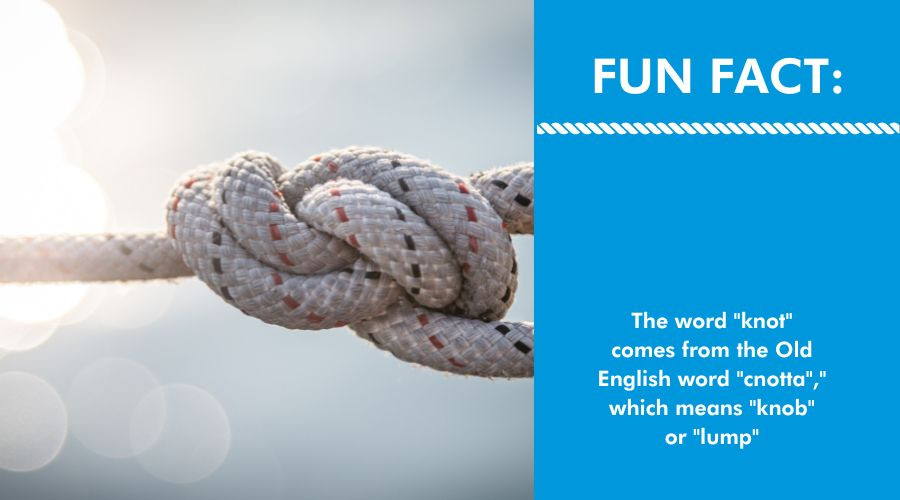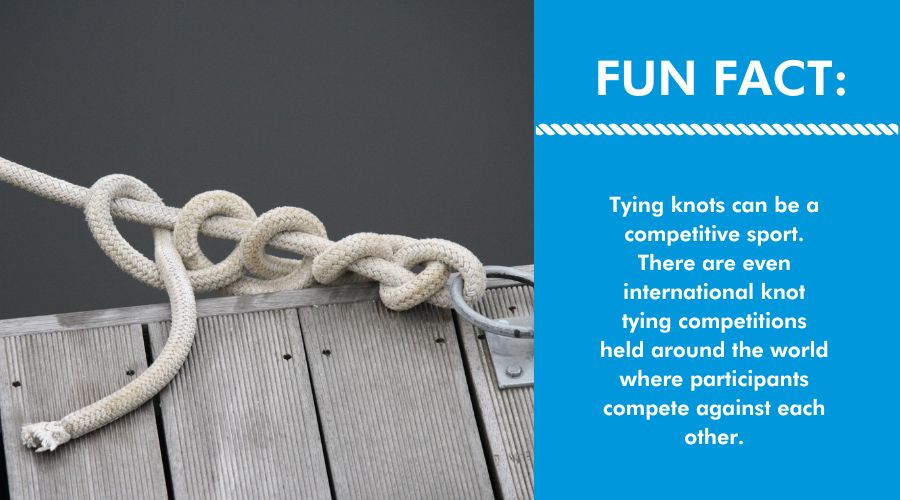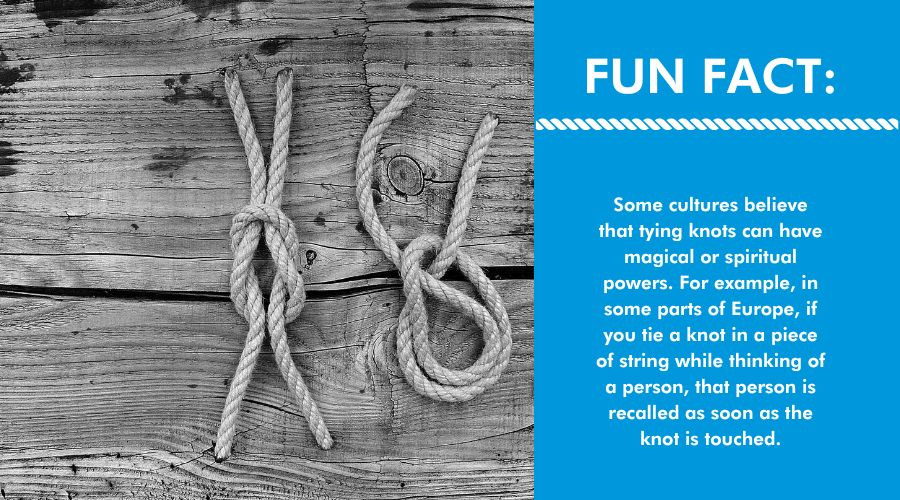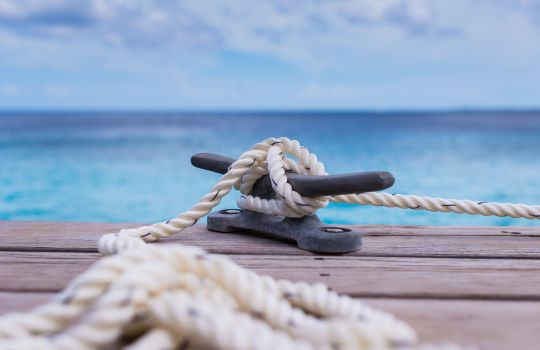16.04.2023.
Knowing how to tie sailing knots is not only an essential skill for any sailor, but it can also be a source of fun while out on the open sea. Let’s learn some basic sailing knots and fun facts about them together.
Ahoy there, sailors! Are you ready to learn the ropes (pun intended) of knot tying in sailing? Sailing knots are not just essential for controlling the movement and direction of the boat, they're also an art form that has been passed down through generations of sailors. So, grab your rope and let's get started!
Did you know that in the early days of sailing, ropes were made from natural fibers like hemp and flax? While these materials were great for tying knots, they had a major downside: they were prone to rotting and deteriorating over time. Thankfully, modern sailors have access to synthetic ropes like nylon and polyester, which are much more durable and long-lasting.
We'll explore some of the most common sailing knots and how to tie them. From the versatile bowline knot to the secure cleat hitch knot, we'll show you step-by-step how to master these essential knots. But there's much more! We'll also share some tips and tricks for making knot tying more interesting and fun.
Every proper sailor should know how to tie a sailing knot. So, hoist the mainsail and let's set sail on our journey to explore the art of knot tying in sailing.

Bowline Knot – the king of knots
The bowline is important knot in sailing and is used to create a secure loop at the end of a rope. This way a rope can be attached to a fixed object, such as a cleat on the boat, or to secure a sail to the mast or boom. Or to create a loop at the end of a line for towing or anchoring.
This knot is functional, non-slip and easy to tie and untie, making it a popular choice for many tasks on a sailboat, but in other activities also.
Following these steps and tie a secure and reliable bowline knot:
1. Create a small loop in the rope, with the free end of the rope passing behind the standing part of the rope.
2. Bring the free end up through the loop.
3. Wrap the free end around the standing part of the rope.
4. Bring the free end back down through the loop.
5. Tighten the knot by pulling on the free end of the rope and the standing part of the rope.
Fun fact: The bowline knot is said to be the most useful knot in sailing, and it has a long history of use. It is believed to have been used by ancient sailors to fasten sails to their ships. The bowline is also known as the "king of knots" because it’s so versatile and can be used in a variety of situations.

Cleat hitch knot – secure and useful
The cleat hitch knot is a common knot used in sailing for securing a rope to a cleat on a boat, which is useful for docking or securing the boat. The knot creates a secure and adjustable grip on the cleat, allowing the sailor to easily adjust the tension of the rope as needed.
Now, grab a rope and let’s learn how to tie the cleat hitch knot:
1. Start by passing the rope around the base of the cleat, crossing the standing end over the working end.
2. Wrap the working end of the rope over the top of the cleat, then bring it down and under the cross of the standing end.
3. Wrap the working end over the top of the cleat again, this time crossing under the standing end.
4. Bring the working end up over the far horn of the cleat, then back down under the near horn.
5. Finally, wrap the working end over the top of the cleat once more, and tie it off by tucking it under itself and pulling it tight.
The cleat hitch knot can be tied quickly and easily. It creates a strong and secure grip on the cleat, allowing sailors to adjust the tension of the rope as needed while docking or securing the boat.
Figure eight knot – versatile and easy
The Figure eight knot is commonly used as a stopper knot because it will not slip through a block or pulley, making it useful for many applications in sailing, rock climbing, and any other activity that requires secure knotting.
1. Take the end of the rope and form a loop, crossing the working end over the standing part of the rope.
2. Bring the working end of the rope back up and through the loop, going over the standing part of the rope again.
3. Bring the working end down and pass it under the standing part of the rope.
4. Take the working end up and through the loop again, going over the standing part of the rope.
5. Tighten the knot by pulling on both the standing part and the working end of the rope.
If you managed to do the knot successfully, the result should look like a figure eight or an infinity symbol.

Sheet bend knot – strong and reliable
The sheet is the rope that controls the angle of the sail, and it is typically tied to the sail using a sheet bend knot. The sheet bend knot allows two ropes of different thicknesses to be tied together securely, which is useful when attaching a jib sheet to a larger halyard.
Let’s learn how to tie a sheet bend knot, with few easy steps:
1. Start by forming a bight (a U-shaped loop) in the larger rope.
2. Pass the smaller rope through the bight and around the back of the larger rope.
3. Bring the end of the smaller rope back through the bight and tie a simple overhand knot around itself.
4. Pass the end of the smaller rope back through the loop that was created in step 2, but this time go under the larger rope and over the smaller rope's own standing end.
5. Finally, tighten the knot by pulling on both ends of the ropes.
The resulting knot should have a zig-zag pattern, with the two ropes securely joined together.
The sheet bend knot is useful in sailing because it allows two ropes of different sizes or materials to be joined together, which is often needed when attaching a smaller jib sheet to a larger main sheet. It is a strong and reliable knot that can withstand significant stress and tension.
Rolling hitch knot – strong and non-slip grip
The rolling hitch knot is useful in sailing because it allows a rope to be attached to a mast or a spar in a secure and adjustable way. As tension is applied to the working end of the rope, the knot will roll along the standing part and tighten around the object, providing a strong grip that won't slip.
1. Take a rope and form a turn (a loop) around the cylindrical object that you want to attach it to.
2. Take the end of the rope and pass it over the standing part of the rope (the part that's going back towards you).
3. Next, take the end of the rope and pass it under the standing part of the rope, forming a half hitch around the standing part.
4. Take the end of the rope and pass it over the standing part again, but this time on the opposite side of the first half hitch.
5. Pass the end of the rope under the standing part of the rope one more time, forming a second half hitch around the standing part.
6. Tighten the knot by pulling on both the standing part of the rope and the working end of the rope.
The resulting knot should have two half hitches that grip the standing part of the rope, allowing the knot to hold onto the cylindrical object.

Let’s make knot tying fun
Knot tying is an essential part of sailing, but it doesn't have to be a tedious task. With a little bit of creativity and imagination, knot tying can be turned into a fun and entertaining activity.
It can be an opportunity to bond with friends and family, to express creativity, and to add a bit of fun and excitement to the sailing experience.
Possibilities are endless, but here are some ideas for making knot tying more enjoyable:
Challenges and competitions: Set up a knot tying challenge or competition with friends or fellow sailors. See who can tie a bowline knot the fastest, or who can tie the most knots in a minute.
Incorporating music: Play some music while knot tying to add a fun and lively atmosphere. Choose a playlist that matches the mood of the sailing trip or have everyone choose a song to add to the playlist. Dance and have fun tying.
Creating art with knot tying: Get creative and use knot trying to make art on the boat. Create a macramé plant hanger or a knot board to display different types of knots. You can also use knot tying to decorate the boat, such as by tying colourful ropes into decorative patterns.
Fun fact: Knot tying can be a competitive sport. In fact, there are international knot-tying competitions held around the world. The International Guild of Knot Tyers, organisation that promotes the study, practice, and advancement of knot tying, holds an annual Knot Tying Challenge.

Conclusion: The art of knot tying
Knot tying is a fundamental skill in sailing, and mastering it takes time, practice, and patience. However, the rewards of knot tying go beyond just the practical aspects of sailing. Knot tying can be a source of fun, as well as a way to express creativity and artistry.
Knot tying is also essential for safe and efficient sailing. From securing the boat to the dock to controlling the sails, knot tying plays a crucial role in every aspect of sailing. By learning and using the right knots for the task at hand, you can ensure that your boat is safe, secure and properly tensioned, which can improve performance and prevent accidents or damage to the boat.
In essence, knowing how to tie the right knot for the task at hand can make a significant difference in the success of a sailing trip.


